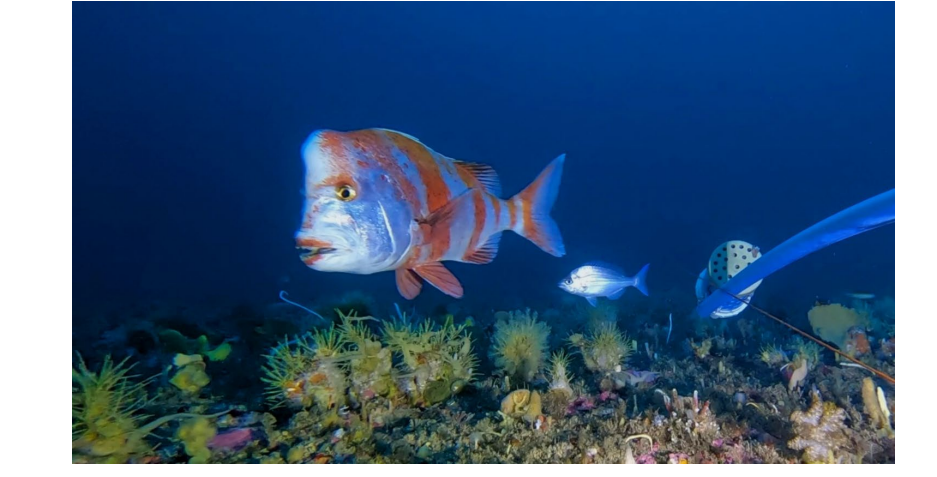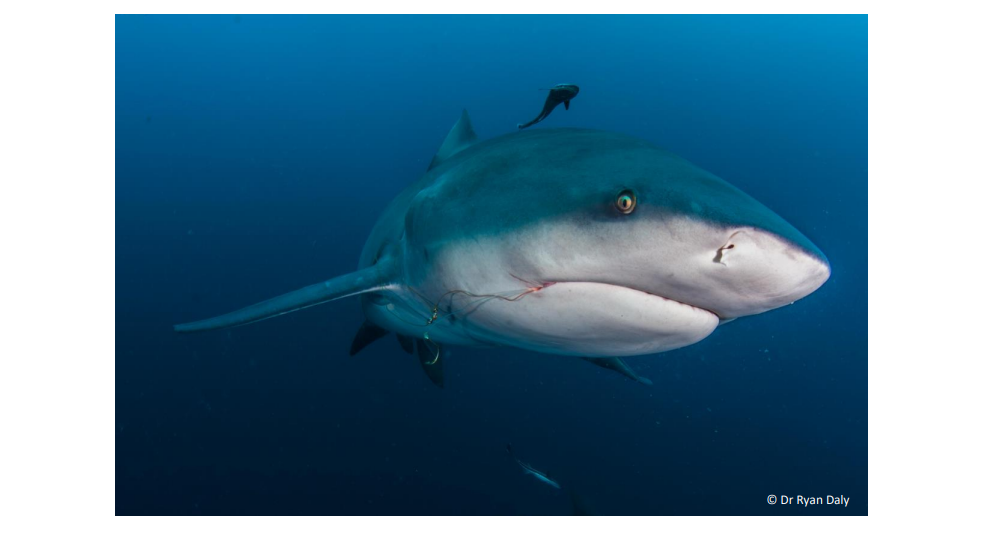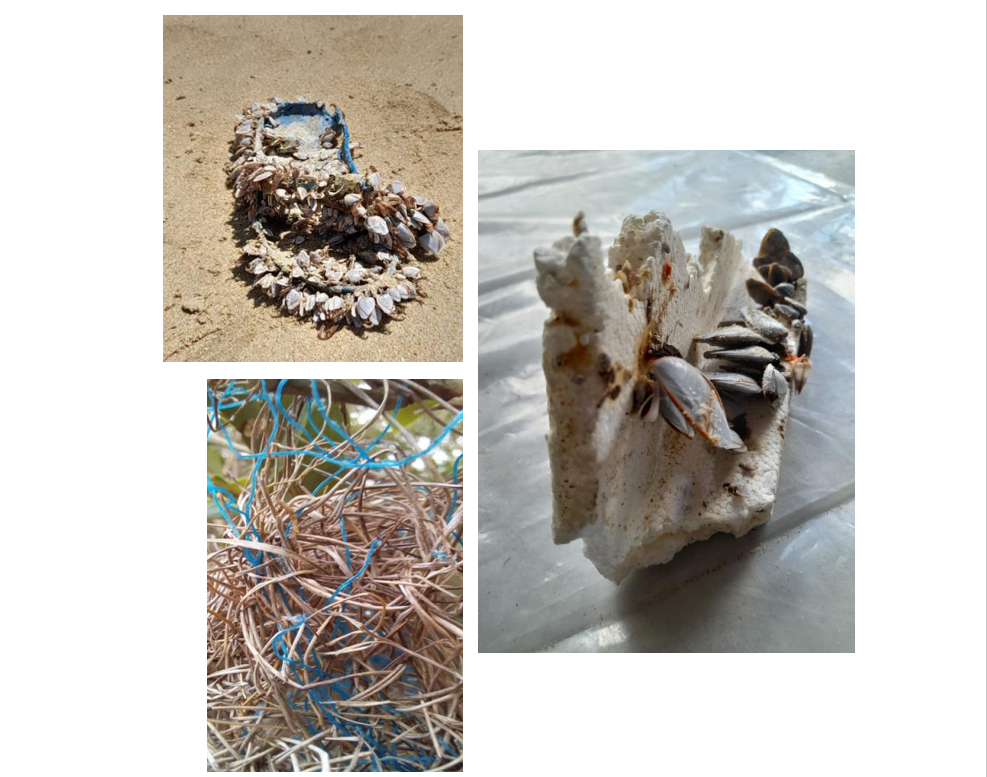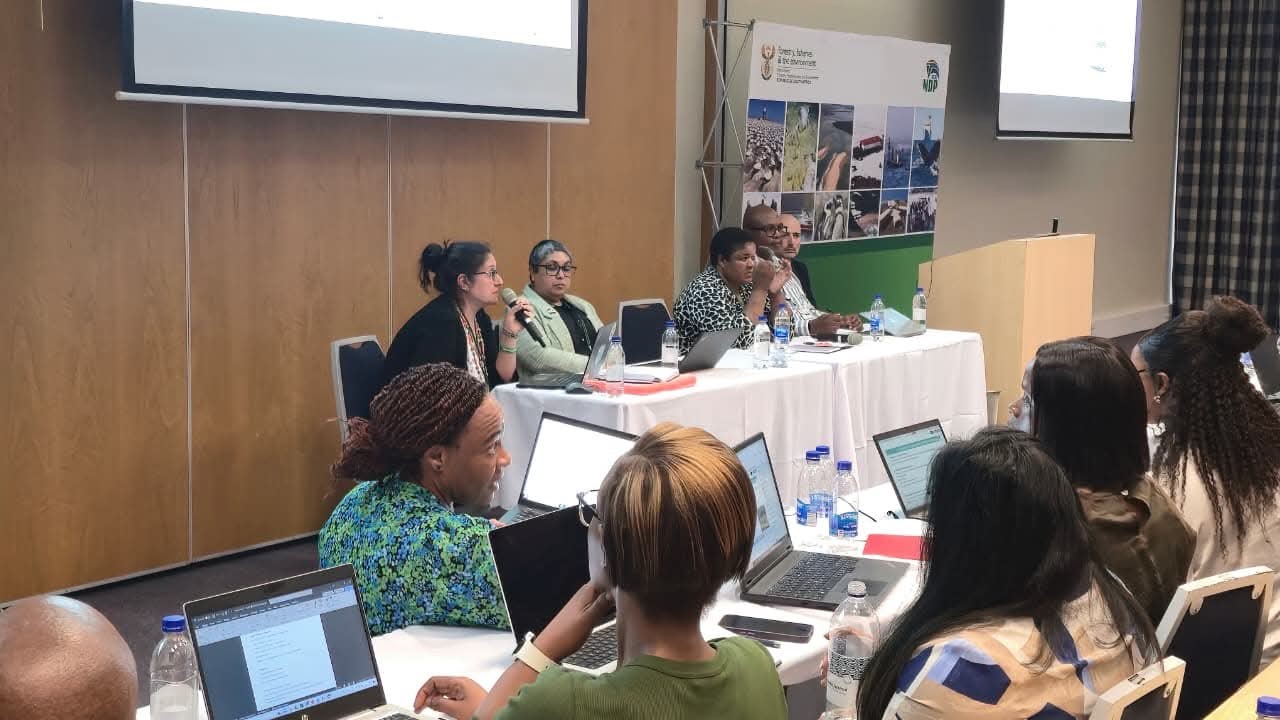Gouritz Ecological Corridors Project, Gouritz Resilient Rivers, Invasion Biology (IAPs)
By Nelisiwe Khusi (GCBR, Junior Hydrologist) and Xiluva Mathebula (Groen Sebenza/NRF-SAIAB Freshwater Taxonomy Intern)
1.1 The importance of Fish monitoring within the Gouritz Cluster Biosphere Reserve
The Gouritz Cluster Biosphere Reserve (GCBR) has diverse freshwater ecosystems predominantly characterised by perennial headwater streams and wetlands. This region is renowned for hosting a wide array of endemic plant species, but the uniqueness of its freshwater fish fauna has not been fully documented. For a long time, this region was thought to only host two indigenous fish species, the Cape galaxias (Galaxias zebratus) and the Cape kurper (Sandelia capensis), with the possibility for the existence of the slender redfin (Pseudobarbus tenuis) and the smallscale redfin (Pseudobarbus asper) (Skelton 2001). Recent work by the NRF-South African Institute for Aquatic Biodiversity (NRF-SAIAB) has however shown that the GCBR is home to two galaxiid fishes, one currently nicknamed Galaxias sp. nov. ‘Gouritz’ that is endemic to a few rivers in this catchment and the common galaxias, currently nicknamed Galaxias sp. nov ‘nebula’. These two galaxiids coexist with the Cape kurper. The presence of these indigenous fishes is an important indication that these rivers are still in a healthy state as their catchments are still in a near natural state, the water is not polluted and there are no invasive fish species. Ongoing monitoring and mapping of their relative abundances and their distribution is therefore essential to provide early warning and identify appropriate intervention measures if there are any changes in river health or invasive species are detected.
Researchers from the NRF-SAIAB recently undertook a survey in collaboration with the GCBR research and monitoring team to provide training on fish sampling and identification of the indigenous fish species of this region. The most effective sampling methods for these streams are the use of seine nets and fyke nets. During this survey, three indigenous fish species were detected, the common galaxias, the Gouritz galaxias and the Cape kurper (Fig. 1). However, it is interesting that redfins (Pseudobarbus species) were not recorded during this survey. This could possibly due to the fact that this survey only covered a limited number of sampling sites. Therefore, additional surveys and ongoing monitoring is required to ascertain the extent of occurrence of native species in this region, as well as to understand their habitat preferences, their interactions, and ultimately to generate long-term data that will be used for assessing trends in population dynamics of these indicator species. This will allow managers to monitor any changes in the health of the unique freshwater ecosystems of this region.
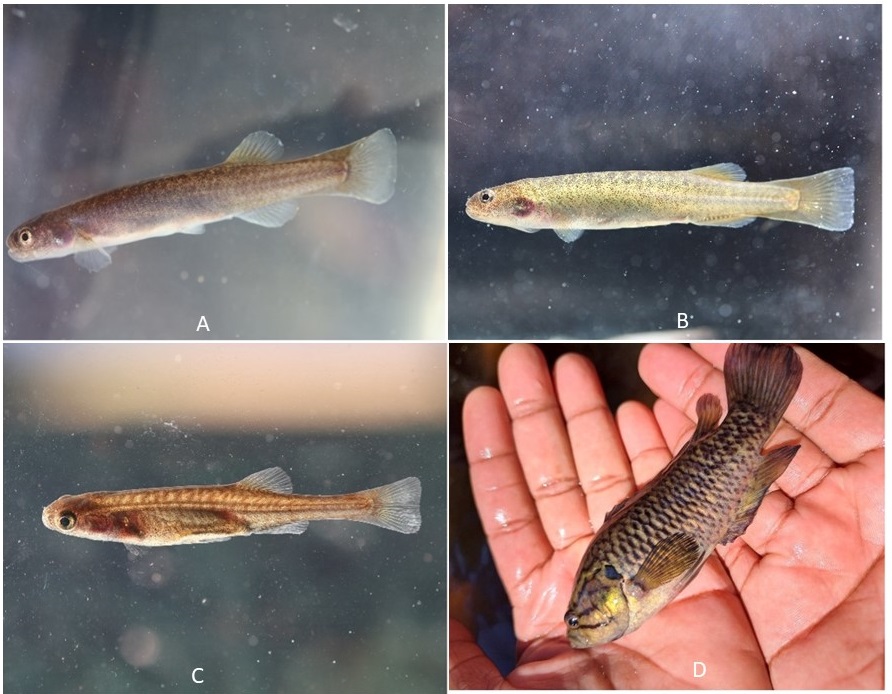
Research indicates that the diversity of the African galaxiids has been severely underestimated as there are at least ten new species that are in the process of being described by researchers from the NRF-SAIAB (Chakona et al., 2013). Such studies provide valuable insights into their adaptability, genetic diversity, and potential vulnerability to environmental changes. Research by the NRF-SAIAB has revealed that the different lineages (or yet to be described new species) of the Cape galaxias seem to vary considerably in their habitat preferences, with some almost exclusively preferring pool habitats, which makes them highly susceptible to open water predators such as large mouth bass, whereas some of them utilise riffle habitats, which makes them highly susceptible to land use activities that cause siltation of rivers. Another interesting finding is that the common galaxias has capabilities to live out of the water for an extended period of time on damp soil (Chakona et al., 2011). This likely contributed to its wider distribution and resilience to some of the environmental stresses that threaten other freshwater species.
The significance of the GCBR is that it is the only region where the Gouritz galaxias occurs. This is based on extensive surveys conducted by the NRF-SAIAB over the last decade that showed that this lineage occurs nowhere else in the Cape Fold Region. Due to its limited geographic range and threats from potential invasion by non-native piscivores that occur in the mainstem Gouritz River, this lineage was assessed as Vulnerable during the most recent assessment of the status of freshwater fishes of South Africa (Chakona et al., 2022). Immediate conservation actions should therefore focus on securing the known populations of the Gouritz galaxias, particularly to safeguard them from potential invasion by invasive species. Research is also required on their habitat preference, breeding biology and population dynamics in order to identify critical habitats that need to be protected to allow the survival of this species into the future. The GCBR has indeed initiated research that will gather the information that will guide targeted conservation approaches that incorporate the unique ecological needs and vulnerabilities of the native fishes of this region to preserve the unique ecosystems and their biodiversity.
1.2 Invasive fish species
The GCBR region also contains invasive fish species such as Black Bass (Micropterus spp.), Carp (Cyprinus carpio), and Catfish (Clarias gariepinus) that poses significant threats to local biodiversity, particularly impacting endemic and indigenous fish populations. On-going fish monitoring assists with determining the distribution abundance of the invasive fish species and identifying areas where efforts should be made to avoid further invasion.

1.3 Hosting the NRF-South African Institute for Aquatic Biodiversity (NRF-SAIAB)
The GCBR hosted the NRF-SAIAB team, which included Professor Albert Chakona (Chief Scientist), Nkosinathi Mazungula (Collections Manager), Xiluva Mathebula (Groen Sebenza/NRF-SAIAB Freshwater Taxonomy Intern). The team provided basic training on various fish sampling methods, understanding the distribution of indigenous and invasive fish species, and identifying different galaxiids species found within the Goukou and Weyers Rivers. We were also joined by organisations that are actively involved in fish monitoring within the Western Cape, such as Alieen Anderson and Mzo Mtshintshi from Grootvadersbosch Conservancy (GVB), as well as Rangani Madaba and Elna Petrettis from CapeNature.
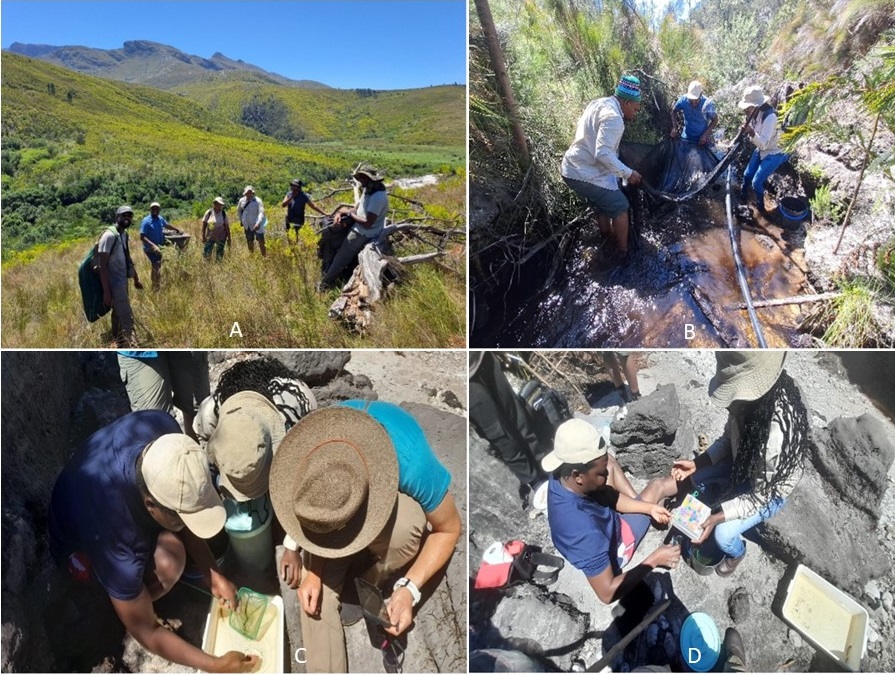
This article was first published by the Gouritz Cluster Biosphere Reserve (GCBR): https://gouritz.com/fish-monitoring-within-the-gcbr-region/
References
Chakona, A., Swartz, E.R. and Magellan, K., 2011. Aerial exposure tolerance of a newly discovered galaxiid. Journal of Fish Biology, 78(3), pp.912-922.
Chakona, A., Swartz, E.R. and Gouws, G., 2013. Evolutionary drivers of diversification and distribution of a southern temperate stream fish assemblage: testing the role of historical isolation and spatial range expansion. PLoS One, 8(8), p.e70953.
Chakona, A., Jordaan, M.S., Raimondo, D.C., Bills, R.I., Skelton, P.H. and van Der Colff, D., 2022. Diversity, distribution and extinction risk of native freshwater fishes of South Africa. Journal of Fish Biology, 100(4), pp.1044-1061.
Skelton, P.H., 2001. A complete guide to the freshwater fishes of southern Africa.
